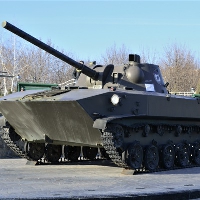高中英语句型全归纳
1. be doing/ be about to do/ be on the point of doing/ had done…, when… (when: 这时,强调一个动作的突然发生)
1) I was walking along the river, when I heard a drowning boy cry for help.
2) I was about to leave when it began to rain.
3) I had just finished my test paper when the bell rang, announcing the exam was over.
2. It was (not) +时间段 +before +一般过去时 "过了一段时间就……"
It will (not) be +时间段 +before +一般现在时 "要过一段时间才会……"
It is/ has been +时间段 +since…
It was +点时间 +when…
It was +时间状语 +that… (强调句)
1) It was not long before he sensed the danger of the position. 不久他就意识到他处境危险。(动作已发生)
2) It will be half a year before you graduate from the school. 还有半年你才从这个学校毕业。(动作未发生)
3) It is 3 years since he worked here. = he left here.(since从句中的谓语动词若是延续性动词,要从这个动作结束的时候算起)
4) It was 3 o'clock when they received the telephone.
5) It was at 3 o'clock that they received the telephone.
3. once… 一旦……,表示时间和条件
1) once you start, you will never give up.
2) once you understand what the teacher explained, you will have no difficulty doing the work.
4. the +比较级……,the +比较级…… "越……越……"
The more books you read, the more knowledge you will get.
5. whether… or… 无论是……还是……
1) Whether the weather is good or bad, they will set off as they planned.
2) Any person, whether young or old, has his own worth.
6. 祈使句 +or/otherwise +结果句或祈使句 +and +结果句
1) Stop doing such a foolish thing, or you will be punished in time.
2) More effort, and the problem would have been settled.
7. every time/ each time/ next time/ the first time/ any time等短语引导时间状语从句,表示"每当,每次,下次,第一次,任何时候"
1) Every time you meet with new words while reading, don't always refer to your dictionary.
2) Next time you come, do remember to bring your son here.
3) You are welcome to come back any time you want to.
8. There is (no) need to do…
There is (no) hope/chance/possibility of doing…
There is (no) difficulty/trouble/point/delay (in) doing
1) Is there any chance of our winning the match?
2) There is no point in discussing the problem again.
9. it 强调句:基本构成形式:It is/was +被强调部分 +who/that +原句剩余部分
I met him in the street yesterday afternoon.
It was I who/that met him in the street yesterday afternoon. (强调是我,不是别人)
It was in the street that I met him yesterday afternoon. (强调是在大街上,不是在别的地方,强调的是地点,但不用where)
It was yesterday afternoon that I met him in the street. (强调是昨天下午,不是在别的时候,强调的是时间,但不用when)
10. not. until 直到……才
1) The villagers didn't realize how serious the pollution was until all the fish died in the river.
2) It was not until all the fish died in the river that the villagers realized how serious the pollution was. (强调句)
3) Not until all the fish died in the river did the villagers realize how serious the pollution was. (倒装句)
11. not only… but (also)…
引导并列结构:作主语时,谓语动词与邻近的一个主语保持一致。
Not only the teacher but also the students have their eyes examined regularly.
not only. but (also)… 引导并列句时,not only引导的部分置于句首时要部分倒装。
1) Not only was everything he had taken away, but also his German citizenship was taken away.
2) Not only should we students study hard, but also we should know how to enjoy ourselves in our spare time.
12. would rather +从句(从句要用虚拟语气,即从句中谓语动词用一般过去时,表示现在或将来的愿望;从句中谓语动词用过去完成时,表示对过去的愿望)
1) I'd rather you posted the letter right now.
我想让你现在就把信寄出去。
2) I'd rather I hadn't seen her yesterday.
我情愿昨天没见到她。
13. so, neither/nor 引导的倒装表示"另一者也如此"及前者的情况也适用于后者,用so, neither/nor引导的倒装句,助动词的选择依据前一句的谓语动词。
1) He has finished his homework, so have I.
2) My sister prefers coffee, so do I.
3) John can't ride a bicycle, neither/nor can I.
若前句的谓语动词既有肯定又有否定形式时,或谓语动词不属于一类时,用It is/was the same with sb.或So it is/was with sb.
4) He is a worker and he works hard, so it is with John.
若后一句是对前一句所说的内容表示赞同或认可,则主语和谓语不倒装。
5) — It is cold today.
— Yes. So it is.
6) — He visited Tokyo last week.
— Yes. So he did.
14. 倍数表达法:
A +谓语 +倍数 +the +n.(size/ height/ length…) +of B
A +谓语 +倍数 +as +adj. +as B
A +谓语 +倍数 +adj.比较级 + than B
A +谓语 +adj.比较级 +than B +by +倍数
1) This square is twice the size of that one.
This square is twice as large as that one.
This square is once larger than that one.
2) This factory produced three times as many cars as they did 10 years ago.
3) He is 3 years older than I.
He is older than I by 3 years.
15. as/with表示"随……进展"as后面接句子,with后面接短语。
1) With the industry developing, the pollution is becoming more and more serious.
2) As the industry develops, the pollution is becoming more and more serious.
16. with的复合结构(作状语或作定语)
with +n. +adj. (with可以省略)
1) (With) the street wet and slippery, we had to ride our bikes slowly and carefully. Because the street were wet and slippery, …
2) The students were listening to the teacher, (with) their eyes wide open.
The students were listening to the teacher, and their eyes were wide open.
with+ n. + adv. (with可以省略)
3) He put on his coat hurriedly, (with) the wrong side out.
with + n. + prep.-phrase (with可以省略)
4) The old man was seated in the sofa, (with) a pipe in his mouth.
with +n. +to do/to be done (动词不定式的动作还未进行)
with +n. +doing/being done (动词不定式的动作正在进行)
with +n. +done (动词不定式的动作已经完成或指n.所处的状态)
5) With so many problems to settle, the newly-elected president is having a hard year.
6) He was lying in bed, with his eyes fixed on the ceiling.
7) With the temple being repaired, we can't visited it.
17. 以here, there, in, out, up, down, away等副词开头的倒装句(多用一般现在时表示正在进行的动作)。
1) Here comes the bus! (=The bus is coming here!)
2) Away he went. 他走远了。(若主语是代词,则主语与谓语不倒装)
18. 方位状语位于句首时的倒装句。
1) In front of the house stopped a police car.
2) Under the tree sat a boy, with a book in his hand.
19. 具有否定意义的副词或短语位于句首时句子要部分倒装。
常用的有:little, never, seldom, hardly, rarely, no sooner, in no time, by no means, in no case等。
 人老心不老 2023-09-17 12:28:41
人老心不老 2023-09-17 12:28:41









